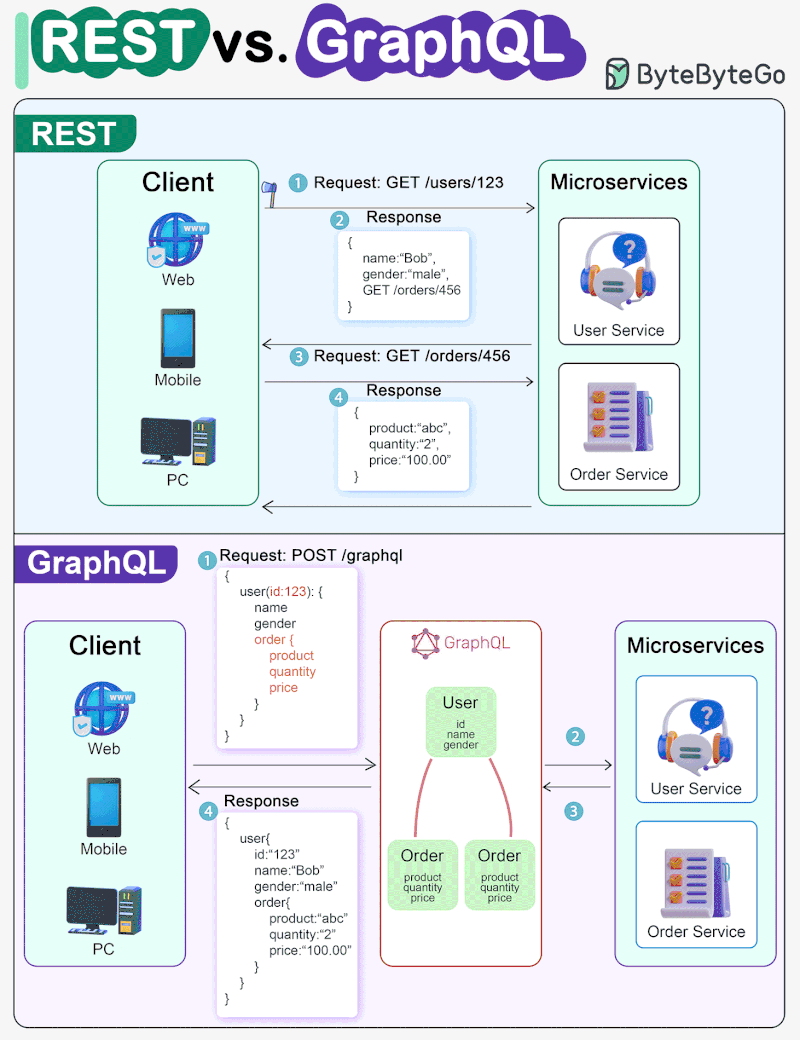
REST API Vs. GraphQL When it comes to API design, REST and GraphQL each have their own strengths and weaknesses.
REST - Uses standard HTTP methods like GET, POST, PUT, DELETE for CRUD operations. - Works well when you need simple, uniform interfaces between separate services/applications. - Caching strategies are straightforward to implement. - The downside is it may require multiple roundtrips to assemble related data from separate endpoints.
GraphQL - Provides a single endpoint for clients to query for precisely the data they need. - Clients specify the exact fields required in nested queries, and the server returns optimized payloads containing just those fields. - Supports Mutations for modifying data and Subscriptions for real-time notifications. - Great for aggregating data from multiple sources and works well with rapidly evolving frontend requirements. - However, it shifts complexity to the client side and can allow abusive queries if not properly safeguarded - Caching strategies can be more complicated than REST.
The best choice between REST and GraphQL depends on the specific requirements of the application and development team. GraphQL is a good fit for complex or frequently changing frontend needs, while REST suits applications where simple and consistent contracts are preferred.